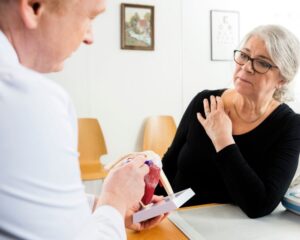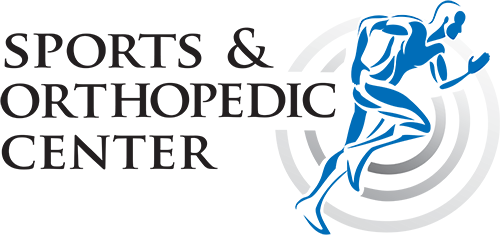ARTHROSCOPIC ROTATOR CUFF REPAIR
When one or more of the rotator cuff tendons is torn, the tendon no longer fully attaches to the head of the humerus.
In most rotator cuff tears, the tendon is torn away from the bone.
Most tears occur in the supraspinatus tendon, but other parts of the rotator cuff may also be involved.
In many cases, torn tendons begin by fraying. As the damage progresses, the tendon can completely tear, sometimes with lifting a heavy object.
 There are different types of rotator cuff tears.
There are different types of rotator cuff tears.
- Partial tear: This type of tear is also called an incomplete tear. It damages the tendon but does not completely sever it.
- Full-thickness tear: This type of tear is also called a complete tear. It separates all of the tendon from the bone. With a full-thickness tear, there is basically a hole in the tendon.
WHEN DO I NEED TO MOVE TO A SURGICAL OPTION?
Surgery is an option for a torn rotator cuff if your pain does not improve with nonsurgical methods. Continued pain is the main indication for surgery. If you are very active and use your arms for overhead work or sports, your doctor may also suggest surgery.
Other signs that surgery may be a good option for you include:
- Your symptoms have lasted 6 to 12 months
- You have a large tear (more than 3 cm) and the quality of the surrounding tendon tissue is good
- You have significant weakness and loss of function in your shoulder
- Your tear was caused by a recent, acute injury
WHAT IS AN ARTHROSCOPIC SURGERY
Arthroscopy is a procedure for diagnosing and treating joint problems. A surgeon inserts a narrow tube attached to a fiber-optic video camera through a small incision — about the size of a buttonhole. The view inside your joint is transmitted to a high-definition video monitor.
Arthroscopy allows the surgeon to see inside your joint without making a large incision. Surgeons can even repair some types of joint damage during arthroscopy, with pencil-thin surgical instruments inserted through additional small incisions.
All-arthroscopic repair is usually an outpatient procedure and is the least invasive method to repair a torn rotator cuff
REHABILITATION
Rehabilitation plays a vital role in getting you back to your daily activities. After surgery, you will have a specific program of physical therapy program to follow. Your therapy during recovery and rehabilitation will progress in stages to help you steadily regain shoulder strength and motion.
- Immobilization—Use of a sling after surgery will protect the shoulder and prevent your arm from moving while the repair heals. A sling is often required for the first 4 to 6 weeks, or however long your orthopaedic surgeon recommends, depending on the severity of your injury.
- Passive Exercise—During this form of exercise, a therapist supports the arm while moving it in different positions to help improve range of motion in your shoulder. Passive exercise usually begins within 4 to 6 weeks after surgery, or whenever your orthopaedic surgeon decides it is safe for you to begin moving your arm and shoulder.
- Active exercise—As your healing and recovery progresses, you will be told when it is safe for you to begin doing active exerciseswithout the help of your therapist. Moving your muscles on your own will gradually increase your strength and improve your arm control. At 8 to 12 weeks, your therapist will start you on a strengthening exercise program.
You should expect a complete recovery to take several months. Most patients have a functional range of motion and adequate strength by 4 to 6 months after surgery. The process may seem slow, but your commitment to rehabilitation is key to experiencing a successful outcome.
In case you more questions, don’t hesitate. Just book an appointment with the health experts at the Sports and Orthopedic Center to receive proper treatment for all health problems.


